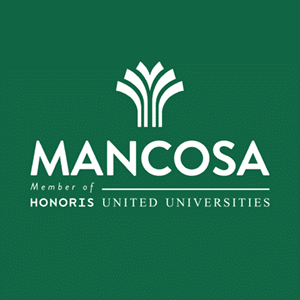Agile vs. Traditional Project Management: Choosing the Right Approach
Choosing the right project management (PM) approach can mean the difference between a project that thrives and one that stalls midway. Here’s the truth: how you manage a project should match how your business moves. Whether you're considering entering the PM industry or are already overseeing a digital transformation, launching a new product, or managing a complex client project, understanding the key differences between agile and traditional models can help you lead confidently, reduce waste, and deliver better results in your career. This is where MANCOSA’s BCom in Project Management is invaluable. It teaches you the key techniques you need to use throughout your career as a PM professional. In this post, we’ll break down the core distinctions between the two, show how real businesses apply them, and give you an overview of how you would choose the right approach in one project versus another.

The difference between traditional and agile project management (PM)
Let’s face it. The business world is becoming increasingly fast-paced, with many systems and processes turning digital. In fact, according to McKinsey research, 90% of all organisations are currently undergoing some type of digital transformation.
And so, regardless of whether you’re overseeing a small team or scaling operations across departments, the approach you choose — agile or traditional — will influence everything you and your team do.
Let’s examine the key differences between the two PM models and how each performs in real-life business scenarios.
Approach to planning
Traditional project management (often following the Waterfall model) emphasises rigid upfront planning. All requirements are gathered at the start, and the project is mapped in sequential phases — like blueprints for building a house. This approach works well for construction, manufacturing, or heavily regulated industries, where change can be costly.
For example, a government infrastructure project — building a new highway — typically uses traditional planning. Every detail (budgets, permits, blueprints) must be approved before work starts. Deviating midway could mean legal implications or budget blowouts.
On the other hand, agile PM flips this by encouraging adaptive planning. Projects are broken into smaller chunks (sprints or iterations), and planning happens continuously. Teams reflect, adjust, and iterate as they go.
For example, a mobile app startup developing a new social media feature uses agile. Instead of guessing everything users want upfront, they release a minimum viable product (MVP), collect feedback, and adapt features in weekly sprints.
If you study for a PM degree, planning is one of the key techniques you’ll learn. Discover the other PM techniques here.
Team collaboration
In traditional PM, roles are clearly defined and hierarchical — think of a Gantt chart where each department completes its portion before handing it off. While this reduces confusion over responsibilities, it can slow down problem-solving.
For example, in a traditional marketing campaign rollout, the design team creates the assets, then passes them to the copywriters, who hand them off to the digital team. If changes are needed, it can mean backtracking through multiple departments.
Agile thrives on cross-functional collaboration. Teams from different disciplines (design, dev, marketing) work together daily. Daily standups, retrospectives, and shared ownership accelerate decision-making and innovation.
For example, at Spotify, product squads operate like mini startups with designers, engineers, and product managers all working together. This leads to faster releases and better integration across departments.
Timeline and delivery
Traditional PM delivers one big result at the end. This is ideal for projects with predictable outcomes, like building a hospital wing or setting up ERP software across a company.
However, the challenge is that if something goes wrong midway, discovering the issue late in the process can mean extensive rework and costly delays.
On the other hand, agile delivers incrementally. Projects are broken down into features or functions delivered regularly. This means stakeholders see results faster and can pivot if priorities change.
For example, if an eCommerce brand launches its new website in phases: homepage first, then checkout functionality, then user profiles. Early wins help validate direction, and changes are easier to incorporate.
The 17th State of Agile Report by VisionOne shows that 41% of businesses adopt agile processes because it prioritises delivery of the most valuable work, while another 41% cite faster time to market as the biggest advantage.
Response to change
Traditional methodologies resist changes once the scope is defined — what’s known as “scope creep.” Altering plans can mean change requests, approvals, and delays.
For example, a consulting firm contracted to implement HR software across five branches sticks rigidly to scope, even when employees at two locations raise usability concerns. Addressing the issues of post-launch costs is more important than building flexibility from the start.
Agile, however, embraces change. Customer feedback or market shifts are incorporated throughout the process, keeping the project aligned with real needs.
For example, a SaaS company developing a customer dashboard shifts priorities mid-sprint when new analytics requests come in from top clients. Agile lets them pivot without derailing the entire project.
How to choose the right PM model for your needs
Selecting between agile and traditional PM isn’t one-size-fits-all. Here’s how to determine which approach aligns best with your business or career goals:
1. Assess project complexity and scope
If your project has clearly defined deliverables, like implementing a payroll system with fixed requirements, a traditional Waterfall model is likely ideal. But if you’re launching a new product with changing features, agile allows for flexibility and ongoing refinement.
2. Consider team size and structure
Small, cross-functional teams — like a startup’s product team — can thrive in agile environments with daily standups and iterative releases. Traditional models work well for large departments with formal roles and chains of command.
3. Elevate stakeholder involvement
Are your clients or stakeholders heavily involved in shaping the outcome? Agile’s continuous feedback loops are perfect. If clients prefer to sign off once at the beginning and again at delivery, tradition might be better.
4. Understand your timeline and deadlines
Need to get to market fast? Agile delivers value in smaller chunks. But if you’re managing a fixed-schedule event, like a product launch date, traditional methods offer structured planning and time control.
5. Review industry standards and compliance needs
Construction, finance, and healthcare often require formal documentation and compliance, favouring traditional methods. Agile shines in industries like tech, marketing, and design, where innovation and speed are key.
Project management courses that can help you upskill
Depending on where you’re at in your career, there are different PM courses you can take to learn these skills.
- A Bachelor of Commerce in PM is a great option if you’re fresh out of school and want to start your career in PM from the get-go. It provides comprehensive knowledge of the PM industry and gives you the tools and skills you need to enter this career with confidence.
- A Postgraduate Diploma in PM is your best option if you already have a degree and want to pivot your career into the PM industry.
Both these courses cover key project management techniques, including agile and traditional methodologies, giving you well-rounded knowledge and skills to thrive within the industry.
Register for a project management certification online
If you’re ready to dive into this exciting and lucrative industry and want to take the next step, have a look at MANCOSA’s BCom in PM and Postgraduate Diploma in PM here.
Should you have any questions regarding the courses or if you’d like to discuss anything in particular before you decide whether this is right for you, feel free to contact us directly. We’re more than happy to help.





